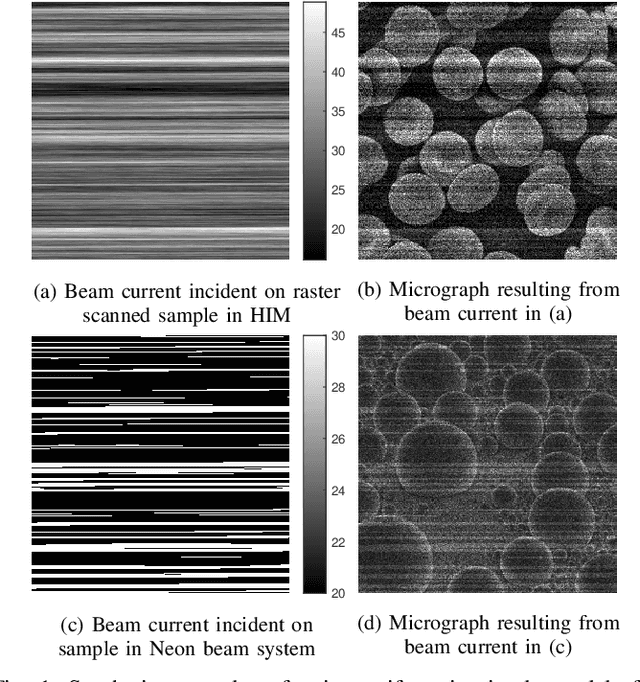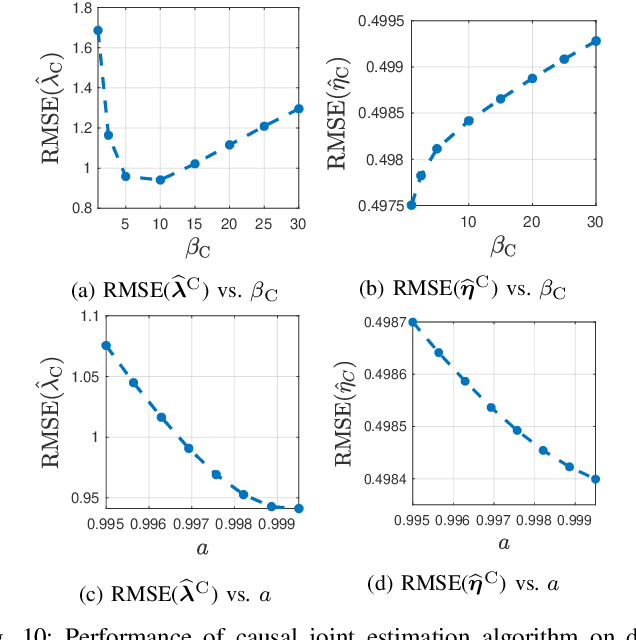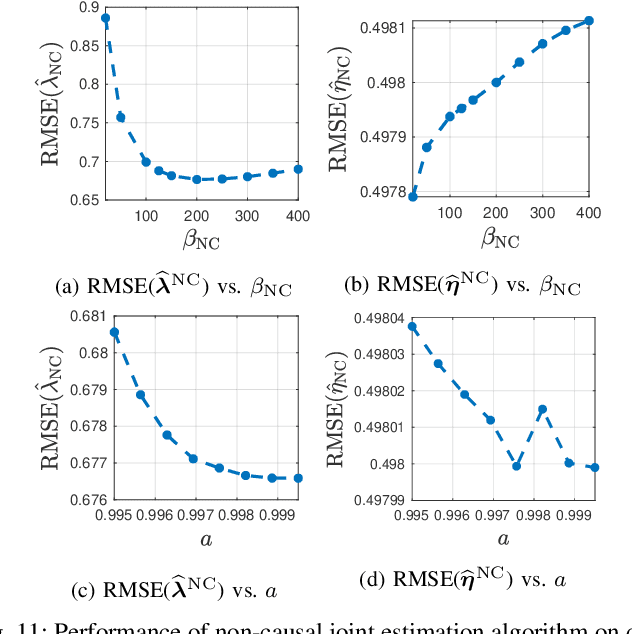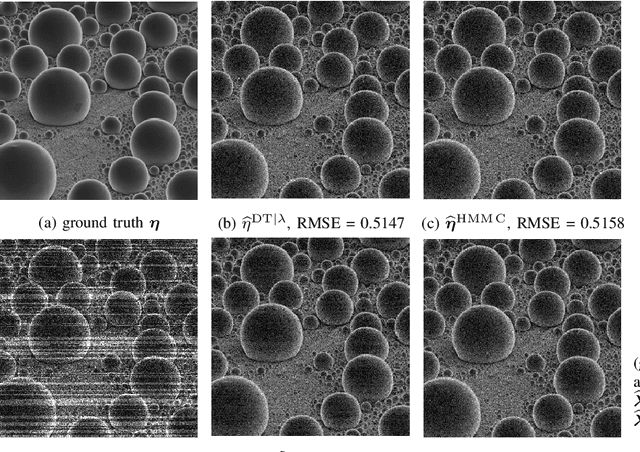Luisa Watkins
A Probabilistic Focalization Approach for Single Receiver Underwater Localization
Mar 06, 2024


Abstract:We introduce a Bayesian estimation approach for the passive localization of an acoustic source in shallow water using a single mobile receiver. The proposed probabilistic focalization method estimates the time-varying source location in the presence of measurement-origin uncertainty. In particular, probabilistic data association is performed to match time-differences-of-arrival (TDOA) observations extracted from the acoustic signal to TDOAs predictions provided by the statistical model. The performance of our approach is evaluated using real acoustic data recorded by a single mobile receiver.
Online Beam Current Estimation in Particle Beam Microscopy
Nov 20, 2021



Abstract:In conventional particle beam microscopy, knowledge of the beam current is essential for accurate micrograph formation and sample milling. This generally necessitates offline calibration of the instrument. In this work, we establish that beam current can be estimated online, from the same secondary electron count data that is used to form micrographs. Our methods depend on the recently introduced time-resolved measurement concept, which combines multiple short measurements at a single pixel and has previously been shown to partially mitigate the effect of beam current variation on micrograph accuracy. We analyze the problem of jointly estimating beam current and secondary electron yield using the Cramer-Rao bound. Joint estimators operating at a single pixel and estimators that exploit models for inter-pixel correlation and Markov beam current variation are proposed and tested on synthetic microscopy data. Our estimates of secondary electron yield that incorporate explicit beam current estimation beat state-of-the-art methods, resulting in micrograph accuracy nearly indistinguishable from what is obtained with perfect beam current knowledge. Our novel beam current estimation could help improve milling outcomes, prevent sample damage, and enable online instrument diagnostics.
Mitigating Current Variation in Particle Beam Microscopy
Jun 08, 2021



Abstract:Particle beam microscopy uses a scanning beam of charged particles to create images of samples, and the quality of image reconstruction suffers when this beam current varies over time. Neither conventional reconstruction methods nor time-resolved sensing acknowledges beam current variation, although through sensitivity analysis, my project demonstrates that when the beam current variation is appreciable, time-resolved sensing has significant improvement compared to conventional methods in terms of image reconstruction quality, specifically mean-squared error (MSE). To more actively combat this unknown varying beam current's effects, my project further focuses on designing an algorithm that uses time-resolved sensing for even better image reconstruction quality in the presence of beam current variation. This algorithm works by simultaneously estimating the unknown beam current variation in addition to the underlying image, offering an alternative to more conventional methods, which exploit statistical assumptions of the image content without explicitly estimating the beam current. Using a concept of excess MSE due to beam current variation, this algorithm provides a factor of 7 improvement on average, which could lead to less expensive equipment in the future. Beyond improving the image estimation, this algorithm offers a novel estimation of the beam current, potentially providing more control in manufacturing and fabrication processes.
 Add to Chrome
Add to Chrome Add to Firefox
Add to Firefox Add to Edge
Add to Edge